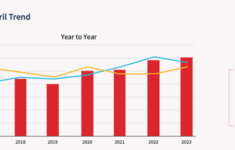Property/casualty insurance brokers who aren’t diligent about the accounts they’re presenting to American International Group risk being discovered through one of the features of the carrier’s analytical process, AIG’s CEO Bob Benmosche said Friday.
Speaking on an earnings conference call a day after the company announced 16.9 percent jump in third-quarter net income to $2.2 billion, and a 33 percent jolt in P/C pretax third-quarter operating income to $1.0 billion, Benmosche took the opportunity to comment on the analytics process that goes in to risk pricing.
Making the point that AIG’s price increases are segmented based on an analytical process that doesn’t necessarily follow the market, Benmoshe said that analytics, which AIG has developed to determine an “account quality index,” have been refined to the broker level.
“We’re now looking at brokers, and what the broker quality index is,” he said. “We know the kind of business that is being brought to us by brokers. Some [are] taking a shot in the dark and hoping someone at AIG will write it,” he said, contrasting those brokers to others in the group that “really prides their business with AIG” and tends to bring the carrier very good risks.
The CEO’s comments followed a question about commercial pricing, which AIG’s John Doyle, CEO of Global Commercial Insurance addressed first. Doyle said that while rates hikes were down a little from the second quarter, the carrier saw a 5.5 percent overall average rate increase in the quarter.
“Casualty rates in the U.S. remain fairly strong. The property market seems to have gotten a bit more competitive. We have been observing that over the course of the last several months. But I expect the same factors driving pricing improvement in casualty in the U.S. to continue in the near future,” Doyle said.
Benmosche supplemented Doyle’s response by stressing the amount of analytics that goes into AIG’s pricing decisions.
“We have very good retention in our best clients and very little rate increase. But we’re getting pretty good retention in some of our lower-quality clients where you need the rate,” he said.
“It isn’t just following the market anymore. We’re becoming much more scientific [about] where in our client base or brokerage-brought business do we want to begin to add rate,” he said, noting that this answer is independent of what’s happening in the market because of the rigorous data analytics process at AIG.
“It’s not just the old everybody’s up or down with the tide,” he said.
Aspirational Goals Continue
Garnering more attention from investment analysts during the conference call on Friday were Benmosche’s comments regarding earnings guidance—or more precisely, his statement that AIG would be offering less commentary going forward on “aspirational goals” that AIG first laid out for the investor community in 2011 in advance of a public offering of shares.
“We are still committed to them, but we’re not sure we’ll get them done by 2015,” he said.
“There was serious concern in the marketplace—could AIG survive and continue to grow and thrive,” he said, explaining the original intent of the goals. “We put together key points that we felt we needed to all work towards to give you the confidence that we can, in fact, return to a very strong company.”
“As we get closer to 2015, we feel that comments going forward are more like guidance rather than the direction we’re all working towards,” he said, explaining why the commentary surrounding the goals will diminish.
According to the May 2011 SEC filing which set forth the goals, they included:
- Increasing ROE to 10 percent or more by the year ended Dec. 31, 2015, from a 6.2 percent normalized ROE for 2010.
- Achieving average annual percentage growth of its earnings per share in the mid-teens through the year ended Dec. 31, 2015.
- Generating between $4 and $5 billion of incremental aggregate pre-tax operating income in 2015
- Reducing AIG’s annual general and administration expenses by approximately $1 billion by the year ended Dec. 31, 2015
- Generating approximately $25 billion to $30 billion of deployable capital through Dec. 31, 2015 to be applied to potential share repurchases, dividend payments, acquisitions or organic business opportunities.
Benmosche did not indicate which of these or any of the other goals listed in the May 2011 filing might take longer to achieve than the 2015 year-end target set at the time.
“It’s not a question of anything other than, as you [analysts] go through all these things, when we get closer to 2015, you’re going to ask us to be more specific,” he told an analyst who asked him which goals might be at risk. When that happens, then “instead of aspiration, it becomes, ‘We will achieve something around this in this period of time.’
“That would be guidance, and that’s what we’re concerned about,” he said.
Referring to the fact that AIG’s pretax operating income for the third quarter of 2013 declined 12.3 percent to $1.4 billion, another analyst grilled Benmosche on why he chose this particular quarter to make the announcement about the aspirational goals.
“It’s very simple. We’re getting too close,” he said. “You want to wait until next quarter, or the one after? Sooner or later, we face this issue” of aspirations bordering on guidance.
“‘Aspirational’ says we look at this company and all the things we need to do over a five-year period, and we believe could get to this kind of target.”
The word “aspirational” was used intentionally to say to analysts and investors “that we don’t have a plan specifically that says you can get there,” he said.
Rather, AIG management knew “directionally,” what needed to be done, Benmosche said, using a mapping analogy to conclude his remarks on this topic. “We’re going to get to a journey. We’re going to get to Southern New York, [and then] you’re going to ask me, we are you going to make it to Westchester or…Putnam or…Manhattan?”
“That’s guidance,” he said, attempting to explain the degree of specificity that AIG does not plan to give to analysts going forward.



















 The Evolving GenAI Journey: Three Ways the Technology Is Impacting P/C Insurance
The Evolving GenAI Journey: Three Ways the Technology Is Impacting P/C Insurance  NYC Man Charged With Insurance Fraud in Staged Car Crash Captured by Dashcam
NYC Man Charged With Insurance Fraud in Staged Car Crash Captured by Dashcam  InsurTech Innovator Has High Hopes for Ascend
InsurTech Innovator Has High Hopes for Ascend  The Compliance Imperative: How Louisiana’s House Bill 672 Is Reshaping the MGA and TPA Landscape
The Compliance Imperative: How Louisiana’s House Bill 672 Is Reshaping the MGA and TPA Landscape 